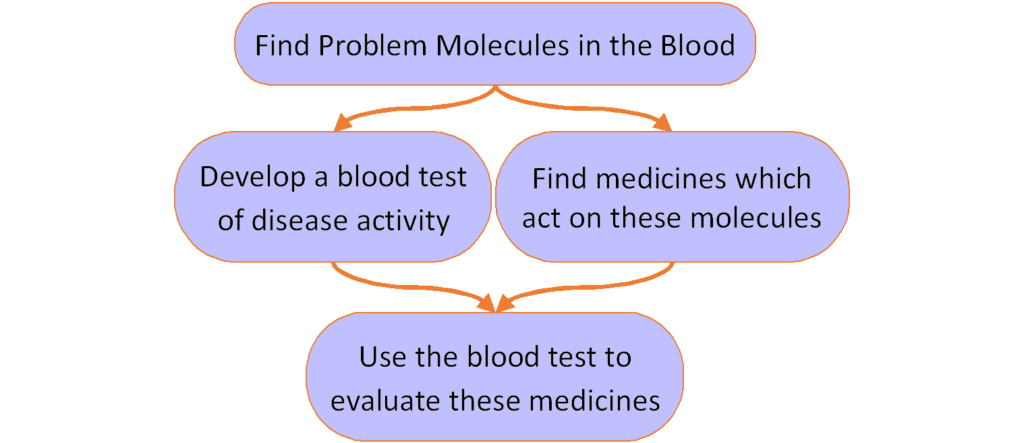Why isn’t there a drug for Dupuytren already? You might hear that surgeons don’t want a Dupuytren cure because it’s so profitable – but take it from a hand surgeon: if Dupuytren disappeared today, surgeons would be happier than patients: no one will miss Dupuytren. So why isn’t there a drug to slow down or stop Dupuytren? Typical answers are that the biology is complicated, that it’s only treated by surgeons but surgeons don’t do drug-treatment research, and that not enough people know about Dupuytren. True, but the biggest reason is pharmaceutical industry drug development is driven by profit, not need. This has broken drug development for rare diseases (such as treatment-resistant Dupuytren) and for diseases which lack a fast, efficient way to test treatment effects (Dupuytren again). Pharma currently dominates drug development funding. When the Dupuytren Research Group went to Washington DC I talked with congressional staff who actually seemed to believe only the pharmaceutical industry funded drug development research. I’m glad that’s not true.
It’s self-evident that diseases aren’t unimportant just because they aren’t profitable to treat. Nonprofits understand this and are increasingly taking the lead in developing better treatments for neglected diseases as discussed in this article. The Dupuytren Research Group is proud to represent this trend, conducting research which is desperately needed but not yet profitable enough to attract pharmaceutical companies.
We are getting closer to collecting blood samples from the International Dupuytren Data Bank enrollees. This pilot study isn’t the final study: it’s the study we need to do to make the case for US federal grants to fund large breakthrough studies. This 100-patient pilot study isn’t large enough to create a Dupuytren genetic profile – that will take a minimum of 10,000 Dupuytren patients and close to the same number of people without Dupuytren to compare. However, it is large enough to make progress on two important fronts: a preliminary blood profile of Dupuytren disease activity and the data needed to identify existing drugs which might safely block Dupuytren biology. Running both studies at the same time is the fastest way to get to the last step, which is testing the effects of potential drugs by their effects on the Dupuytren blood profile – as in the diagram above.
Whether or not you have Dupuytren disease, if you haven’t enrolled in the International Dupuytren Data Bank, now is the time! [ale_button url=”https://dupuytrens.org/enroll-in-the-iddb/” style=”light-blue” size=”small” type=”round” target=”_blank”]Enroll in the IDDB[/ale_button]
Charles Eaton MD






